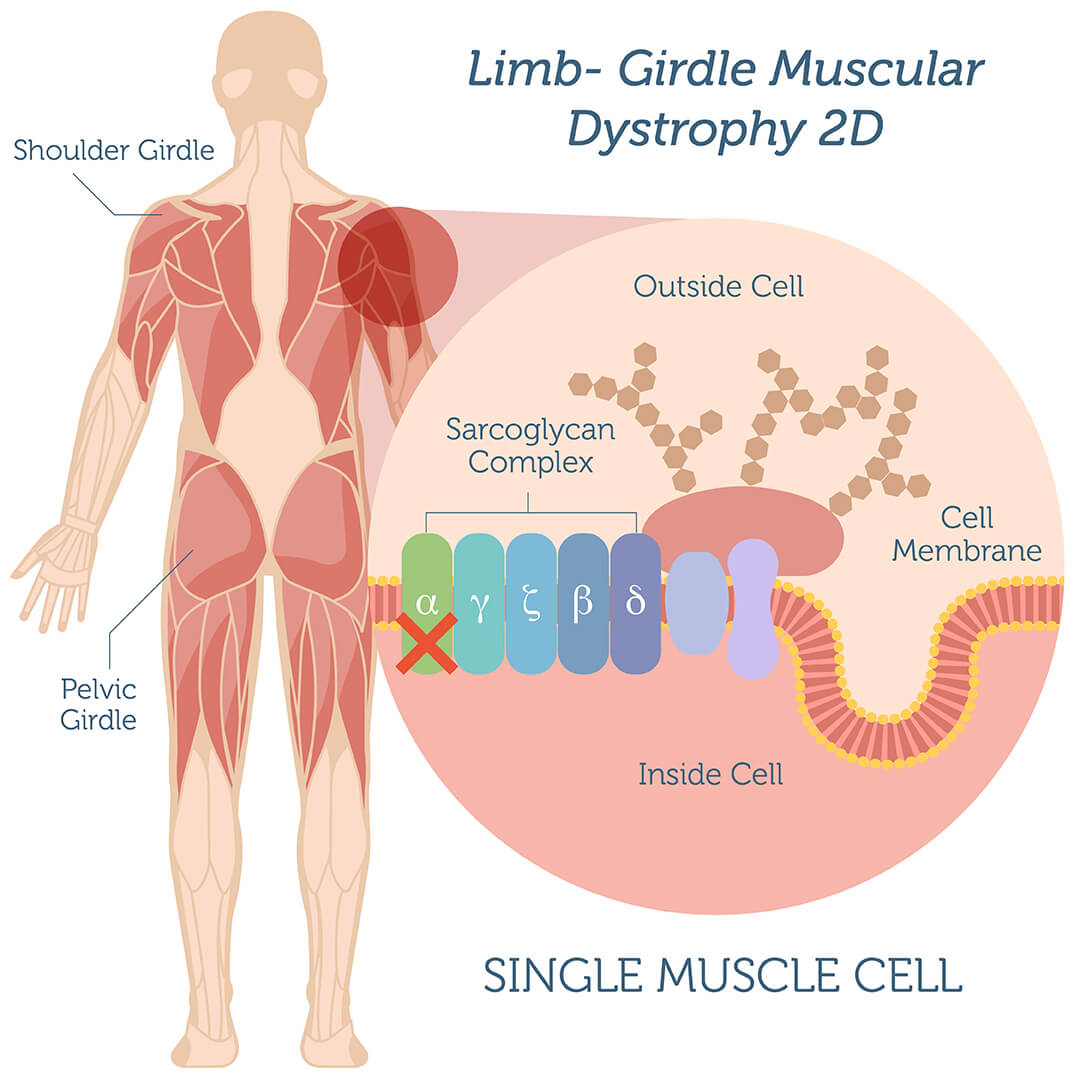Limb-Girdle Muscular Dystrophy Type 2D
Are you a genetic carrier for Limb-Girdle Muscular Dystrophy? Find out with this DNA Test.
- Detects the most common SGCA variant linked to limb-girdle muscular dystrophy type 2D
- Carrier screening test intended for couples who are planning to become pregnant
- Determine the risk of your child inheriting this condition that affects muscle strenght
- 100% private and confidential online results
Already have DNA markers? Sign in and upload your data to view results.
Need to take the DNA Test? Order our easy-to-use swab kit.
Detailed Description
Limb-girdle muscular dystrophies are a group of inherited diseases that leads to weakness and atrophy (wasting) of the muscles. The bone structures that surround the shoulder area (shoulder girdle) and the bone structures that surround the hips (pelvic girdle) are collectively referred to as the limb girdles. Limb-girdle muscular dystrophy affects the proximal muscles (muscles closest to the center of the body) around the hips and shoulders.
Limb-girdle muscular dystrophy type 2D (LGMD2D) is the most common type of limb-girdle dystrophy that manifests in childhood. It is caused by genetic variation in the SGCA gene, which provides instructions to produce a component (subunit) of the sarcoglycan protein complex. Genetic variants of the SGCA gene affect either the formation of the sarcoglycan complex or its ability to bind and stability other proteins, leading to the characteristic features of muscle weakness observed in limb-girdle muscle dystrophy.
Take this test to find out whether you are a genetic carrier of the SGCA variant and are at risk of passing it to your children. This is intended to be a carrier screening test for couples who are considering to start a family.

The Genetics
Limb-girdle muscular dystrophy type 2D is caused by genetic variation in the SGCA gene, which provides instructions to produce a component (subunit) of the sarcoglycan protein complex. In affected people the production of the sarcoglycan protein complex is disrupted giving rise to symptoms associated with LGMD2D.
This condition is inherited in an autosomal recessive pattern, which means two defective copies of the SGCA gene must be inherited in order for the disease to manifest.

Variant Tested
This test looks at one variant of SGCA linked to limb-girdle muscular dystrophy type 2D that occurs approximately in 95% of the carriers of Finnish descent.
- rs28933693 T (R77C)
Understanding your carrier status for these variants will help you understand the risk of passing it to your children.
While it provides a risk analysis for limb-girdle muscular dystrophy type 2D, complete genome sequence analyses may be necessary to identify additional variants associated with other subtypes of limb-girdle muscular dystrophy.
Signs & Symptoms
Following signs and symptoms usually develop in affected infants and children
- Progressive muscle weakness, particularly arm and leg muscles nearest the torso
- Heart problems
- Lung problems
- Spine curve
- Changes in posture or in the appearance of shoulder, back and arm muscles
- Scapular winging
- Abnormal curving in their lower back (lordosis)
- Joint stiffness
- Reduced lifespan
How It Works
Step 1: Sign up for a free Genebase account.
Step 2: Upload your DNA markers to Genebase.
Step 3: Login to your account to access your results when they are ready.


